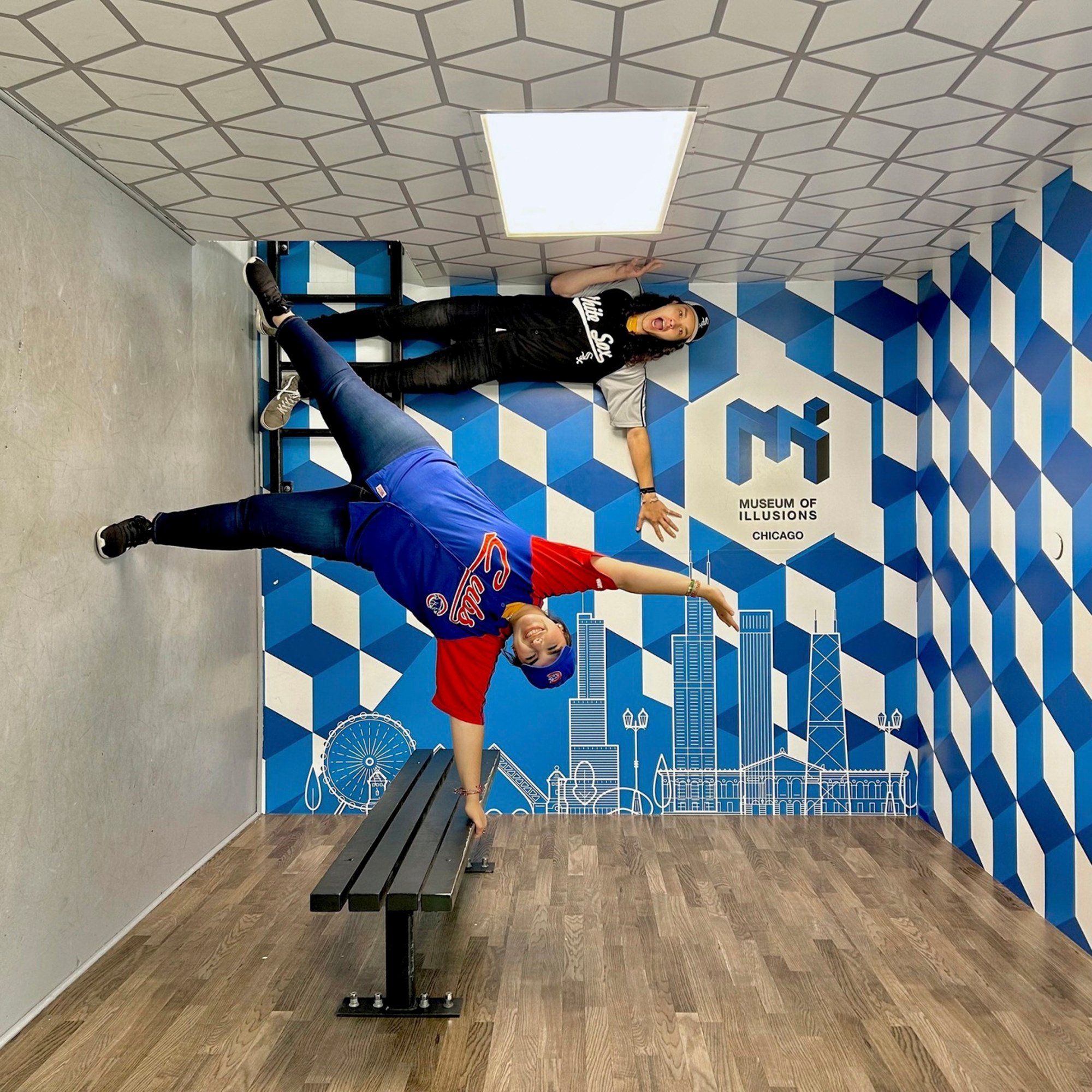Ice cream landscapes, rooms filled with bizarre illusions and other spaces where selfies are a must: Chicago’s new wave of tourist attractions reflects a growing appetite for experiential retail spaces.
Immersive experiences showcasing the work of popular artists including Prince and Vincent van Gogh began popping up around the American city several years ago, putting life back into the streets and filling once-vacant shops.
It was unclear whether such attractions, which allow guests to interact with the exhibits, were a passing fad or here to stay. But most are still going strong, and today they represent one of the brightest spots in the retail sector of the Loop, the city’s central business district.
Museum of Illusions Chicago, an interactive exhibition that presents dozens of optical illusions, has just signed a deal expanding into an empty shop next to its location at 25 E. Washington Street in the Loop.

The expansion takes over space once occupied by a clothing retailer, and will change how the building looks to pedestrians, said Dan Shannon, the property’s asset manager.
“This is the first time in years that we’ve had 100 per cent of our retail space leased,” he said.
Fish-skin shoes, fish on the menu: Hokkaido’s native Ainu celebrated
Fish-skin shoes, fish on the menu: Hokkaido’s native Ainu celebrated
Other experiential retail in the area includes Color Factory, an interactive art museum; Mindworks, a space dedicated to behavioural science opened by The University of Chicago Booth School of Business; the Museum of Ice Cream; and the Medieval Torture Museum, next to the Chicago Theatre.
“July and August were our biggest months in terms of attendance,” said Paula Malone, director of the torture museum, which opened in late 2021 and features historical exhibits such as a guillotine that curious visitors can drop on a dummy.
“It’s not your standard downtown attraction, but we frequently get an emotional reaction from a lot of people, because they get a hands-on feel of what victims went through.”
But whether venues that provide experiences instead of selling goods or services can fill up the many vacant spaces downtown remains to be seen.
The retail sector outside the city centre has made up a lot of ground that was lost during the Covid-19 pandemic, but the Loop is still missing office workers, even though tourists and residents are plentiful, so vacancy rates are high.
On the bright side, Loop retailers are no longer leaving, and with foot traffic slowly increasing, more shops may open in the next few years.
“I feel like things have stabilised,” said John Vance, principal at Stone Real Estate, although that’s partly because many property owners are still giving their retail tenants breaks on rent. “Retailers and restaurants are working with landlords to survive this thing.”
The Museum of Illusions’ decision to expand is “wonderful news”, he said, and could help landlords get comfortable with this new type of retail and show it has staying power.
“The jury is still out on what experiential retail means for the market, but there has been a bit more acceptance.”
One troubling signal was sent in July, when Lighthouse Immersive filed for bankruptcy. The Toronto-based firm is behind Lighthouse ArtSpace Chicago, which opened in 2021 at the Germania Club Building on the Near North Side and presented digital exhibitions on artists such as Vincent van Gogh – staged worldwide, including in Hong Kong – and Frida Kahlo. On September 28, it will open a new exhibition on Claude Monet.
But Shannon is sold on the concept. The museum in his building generates a lot of foot traffic and attention for 25 E. Washington, which also hosts a bank and an exhibition space for the School of the Art Institute on its lower floors.
“The first week they were open, they had a TikTok guy come in and do a video, and it really blew up,” he said. “That’s why we signed a 10-year lease. We don’t see this as a fad.”
The Korean DMZ: lush strip of no man’s land that’s full of memories
The Korean DMZ: lush strip of no man’s land that’s full of memories
The Museum of Illusions opened in 2020 but was soon shut by the Covid-19 pandemic, said Rob Cooper, founder and CEO of LOL Entertainment, which operates the museum and others across the US.
Since reopening in early 2021, about 300,000 visitors have flowed through its 5,000 sq ft (460 square metre) space, viewing dozens of optical illusions and learning how the brain processes visual signals.
“People still wanted to spend money and get out,” he said. “We’re just filled to the brim.”
The recovery of Chicago’s tourism industry was key to the museum’s success, he said.
Stay connected with us on social media platform for instant update click here to join our Twitter, & Facebook
We are now on Telegram. Click here to join our channel (@TechiUpdate) and stay updated with the latest Technology headlines.
For all the latest Travel News Click Here

